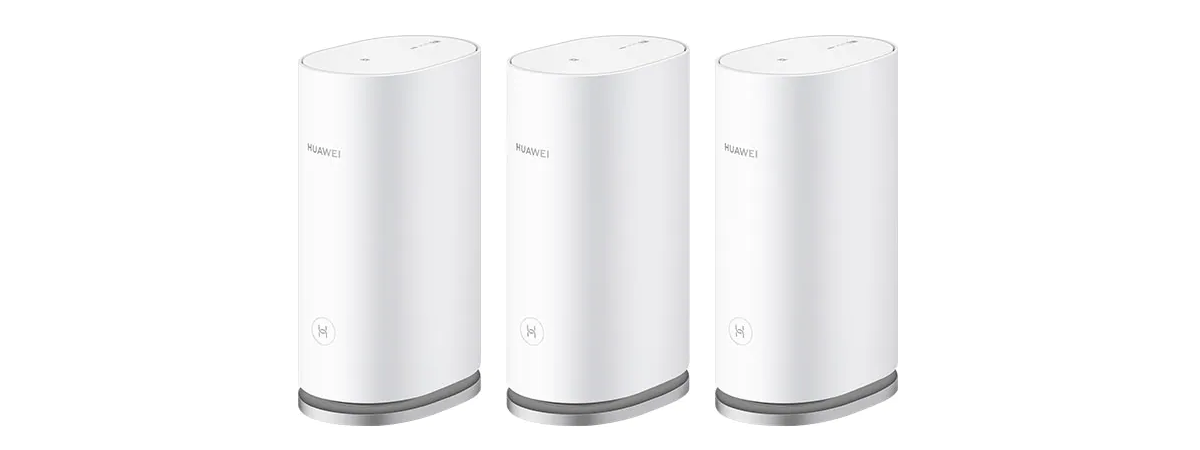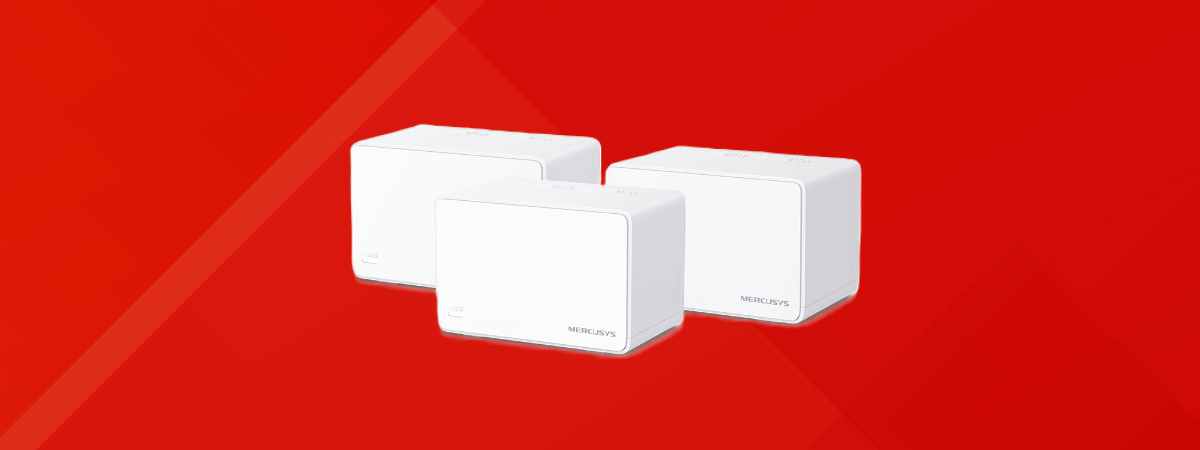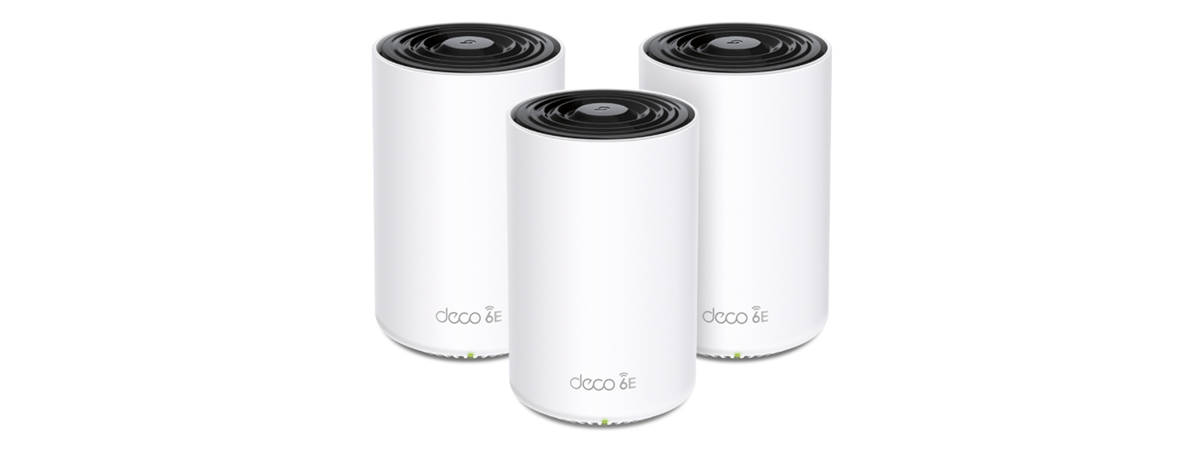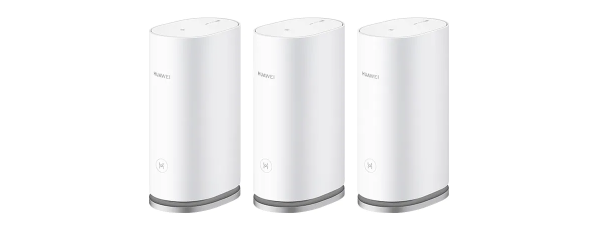
HUAWEI WiFi Mesh 3 is a whole home Wi-Fi system with a pleasant design, an affordable price, Wi-Fi 6 connectivity, and a focus on ease of use. But does all that make it a great choice for your home? To find out the answer to this question, learn more about this elegant mesh Wi-Fi system and whether it’s right for you, read this review:
HUAWEI WiFi Mesh 3: Who is it good for?
This mesh Wi-Fi system is a suitable choice for:
- People with large apartments or one-story houses
- Home networks with a moderate number of devices
- Users who don’t want to spend a fortune on a mesh Wi-Fi system
- Those who don’t need advanced features for their home network
Pros and cons
Here are the things I like about HUAWEI WiFi Mesh 3:
- Good-looking design
- Solid performance when using the Wi-Fi 6 standard
- Superb multi-lingual support (40+ languages)
- Easy to install and configure
- Reasonable pricing
There are also some downsides to consider:
- Wi-Fi 4 and Wi-Fi 5 stability and performance need improvement
- It has few advanced features
- No USB port
Verdict
HUAWEI WiFi Mesh 3 has many good things going for it, impressing with its elegant design and fast setup process. It also doesn’t cost a lot of money, and it offers reliable Wi-Fi 6 connectivity. And most of all, it provides easy-to-extend Wi-Fi coverage for larger apartments and living spaces. That’s enough to constitute a great buy for many users. However, if you’re an advanced user who wants more than basic Wi-Fi, you’ll find the HUAWEI WiFi Mesh 3 rather underwhelming. The same is true if you have older devices that require Wi-Fi 4 or Wi-Fi 5 for backward compatibility. Other mesh Wi-Fi systems offer better performance than HUAWEI WiFi Mesh 3 when it comes to older standards.
Unboxing the HUAWEI WiFi Mesh 3
HUAWEI WiFi Mesh 3 comes in a beautiful cardboard box, with a large picture of the stations that make up the kit on the top cover. On the back and the sides, you find some information about the main features of the system, printed in several languages. If you read everything printed on the box, you’ll notice that HUWEI insists this system is powered by its HarmonyOS platform, its multi-device platform that connects HUAWEI’s entire ecosystem of smart devices.
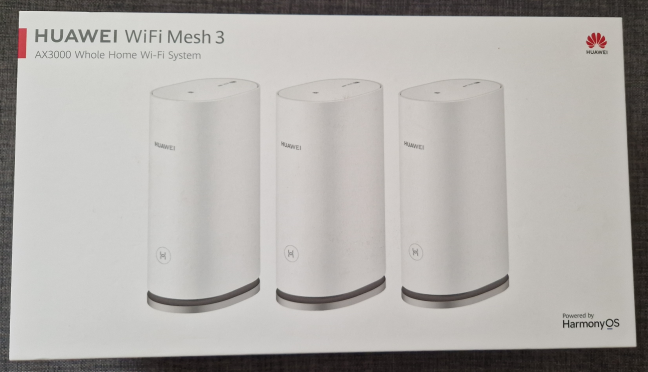
The packaging is beautiful
When you remove the top cover, you see the three stations that are part of the kit, elegantly packaged and placed inside the box.
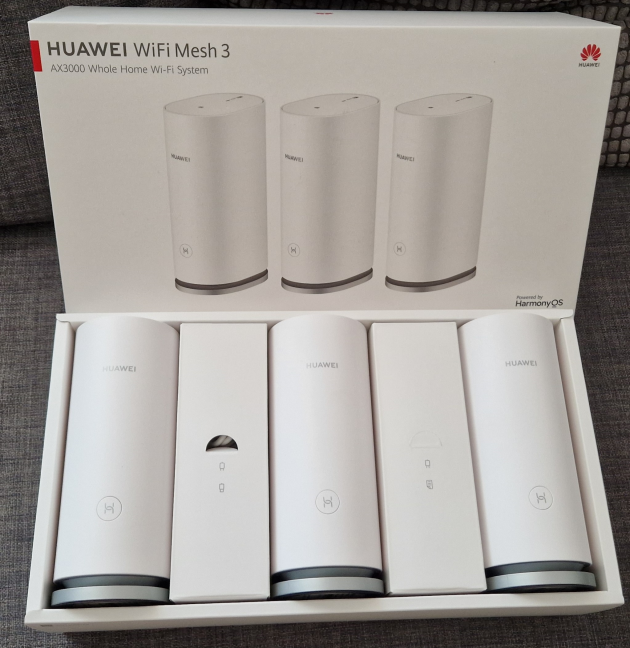
Unboxing HUAWEI WiFi Mesh 3 is a pleasant experience
After unpacking everything, you find the following items: the HUAWEI WiFi Mesh 3 stations, their power adapters, a network cable, the quick setup guide, warranty details, and some other leaflets. While HUAWEI has sent for testing its 3-pack variant, you should know that this system is also sold in kits of two devices, not just three. So if you have a smaller home or apartment, there’s no need to buy a 3-pack.
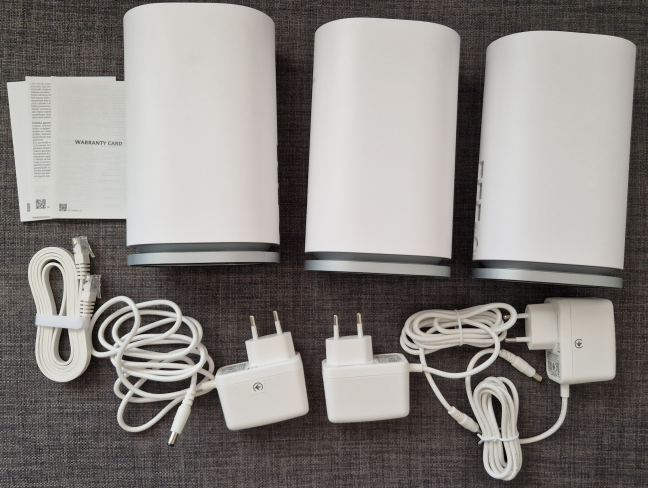
Everything you find inside the box
The packaging used for HUAWEI WiFi Mesh 3 is elegant, and the unboxing experience is very pleasant, making you feel that you’ve just bought a premium, well-designed kit. Inside the box, you find all the information and accessories you need to start setting up your network immediately.
Hardware specifications and design
The stations that make up the HUAWEI WiFi Mesh 3 are all white, with the subtle company logo printed towards the top. Towards the bottom, there’s an H button used to connect devices to the mesh network through WPS. Their design is simple and elegant, fitting for any living room. As for their size, each station has 70 mm x 107 mm x 174 mm or 2.7 x 4.2 x 6.8 inches in width x depth x height. They’re also light, weighing 413 grams or 0.91 pounds each.
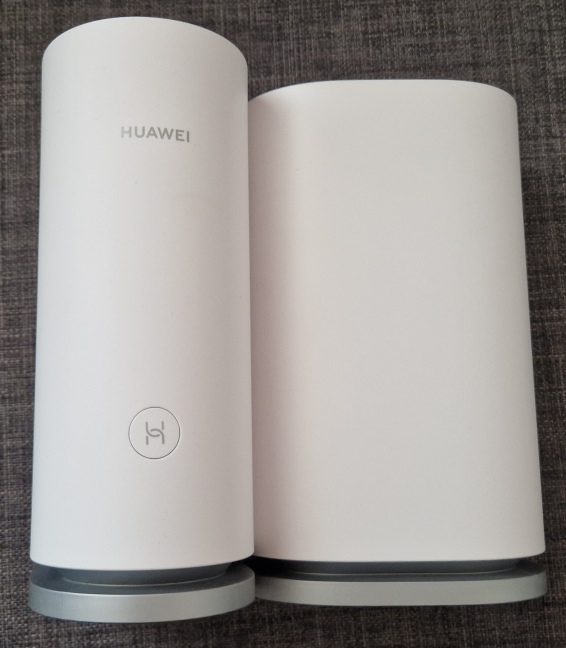
HUAWEI WiFi Mesh 3 has an elegant design
On the top of each HUAWEI WiFi Mesh 3, you see a discreet LED that signals the working status and a logo signaling that it offers Wi-Fi 6 connectivity. A sticker also shows how easy it is to connect your smartphone or tablet to Wi-Fi through NFC.
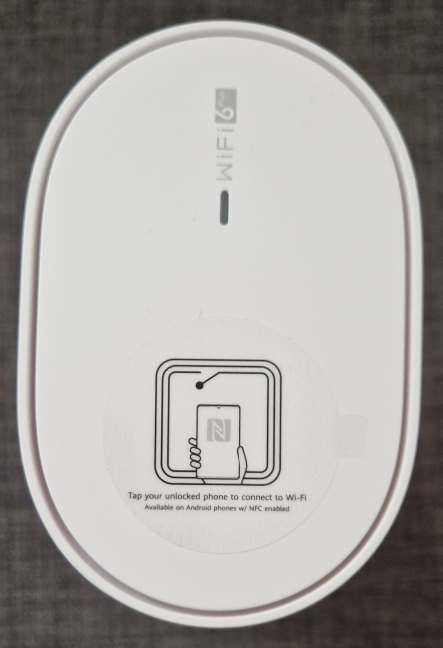
You can connect your smartphone to Wi-Fi via NFC
The base is made of gray plastic and includes a sticker with details about each station. In addition, you see the default IP address, Wi-Fi name, and a QR code that allows you to download the HUAWEI AI Life app and use it to set up this mesh Wi-Fi system. Around the base, a rubber band helps hold each station into place without slipping. Unfortunately, there are no holes for mounting HUAWEI WiFi Mesh 3 on your walls.
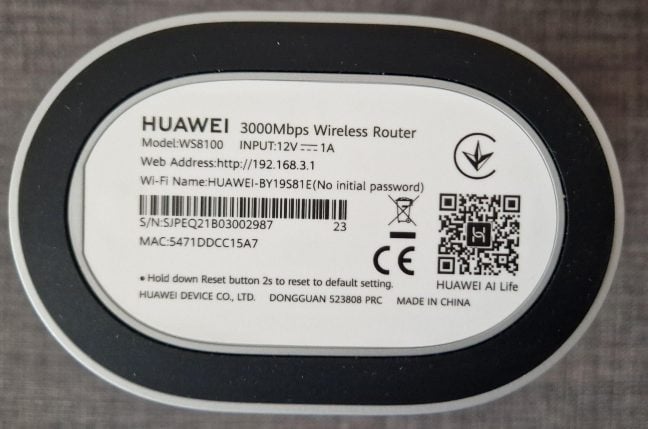
The details on the bottom of each HUAWEI WiFi Mesh 3
The hardware inside each HUAWEI WiFi Mesh 3 is not that powerful. Each station is powered by a dual-core Qualcomm IPQ5018 processor running at 1 GHz, 256 MB of RAM, and 128 MB of storage space for the firmware. While this hardware offers Wi-Fi 6 connectivity and WPA3 password encryption, it is not made to handle networks with many devices. Also, Wi-Fi transfers are available using 2x2 MU-MIMO - another signal that this mesh Wi-Fi system was designed for home networks with a smaller number of devices.
HUAWEI WiFi Mesh 3 is a dual-band system, with its total theoretical maximum bandwidth split as follows: 574 Mbps for the 2.4 GHz band and 2402 Mbps for the 5 GHz band. While HUAWEI isn’t very clear in its official specifications about this aspect, each HUAWEI WiFi Mesh 3 should have four internal antennas for broadcasting the Wi-Fi.
On the back of each HUAWEI WiFi Mesh 3, you find three Ethernet ports working at 1 Gbps, a Reset jack, and the Power jack. Unfortunately, there’s no USB port. Also, this mesh Wi-Fi system doesn’t have a dedicated Wi-Fi backhaul like more premium systems do, which doesn’t make it a great choice for home networks with many devices connected simultaneously.
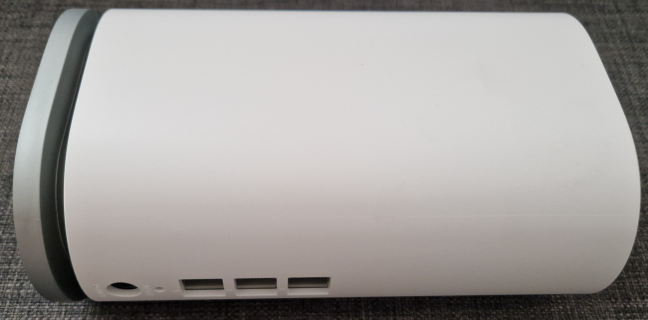
The ports on the back
If you want more technical information about this product, I recommend visiting its official page: HUAWEI WiFi Mesh 3.
Setting up and using the HUAWEI WiFi Mesh 3
The initial configuration process is very quick and involves using the HUAWEI Ai Life app on your smartphone or tablet. I documented the entire process here: HUAWEI WiFi Mesh 3 systems are quick to install.
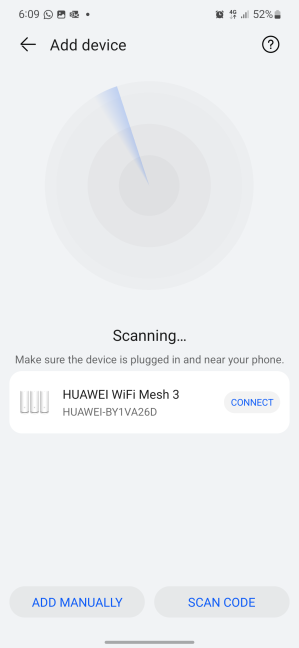
Installing HUAWEI WiFi Mesh 3 is a breeze
You can also use a PC and a web browser; the steps involved are the same as when using the app. In addition, the web-based admin interface and the HUAWEI Ai Life app are available in about 45 languages, which is amazing. I haven’t seen this level of multi-lingual support on any mesh Wi-Fi system I’ve tested so far.
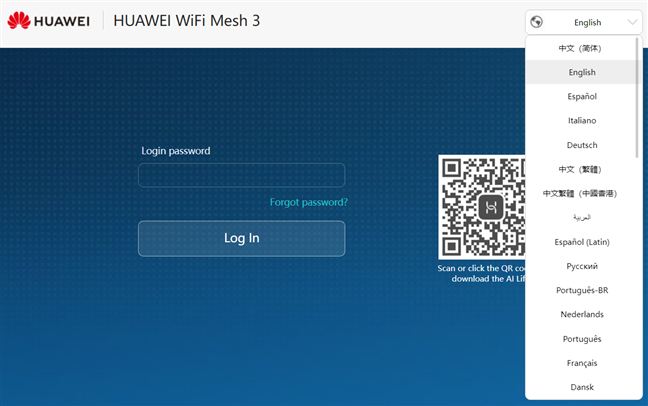
HUAWEI offers excellent multi-lingual support
The web interface first loads the essential configuration options and displays the basic data that most people need. Navigating it is easy, and most settings have on-screen explanations that help you figure things out.
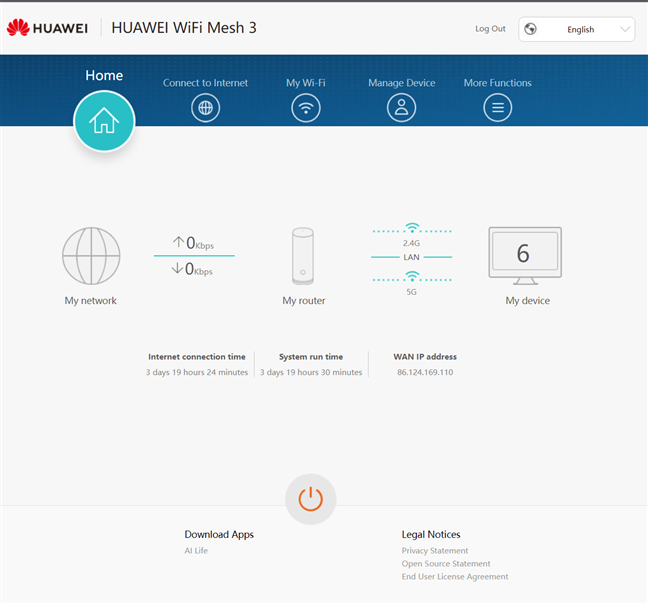
The web-based interface is easy to use
All the advanced features are buried in the More Functions section. I highly recommend accessing this section after the initial setup process because it offers a few settings you can change for the sake of brevity.
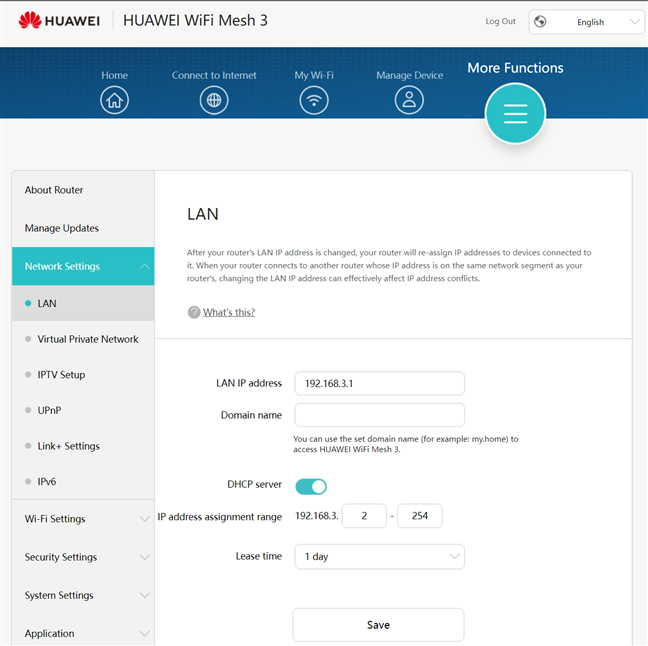
Your advances settings are under More Functions
Knowledgeable users will quickly notice that HUAWEI doesn’t offer much in terms of advanced features: you get IPv6 support which is mandatory for today’s internet, some access rules for the devices that connect to your network, basic Parental Controls, VPN connectivity, and not much else. Coupled with the lack of a USB port, the simplicity of HUAWEI’s firmware will be a downside for advanced users who want more than basic Wi-Fi connectivity. I’ll discuss this subject more in this review's Extra features section.
If you have a HUAWEI smartphone or tablet, you can find the HUAWEI Ai Life app preinstalled. If it’s not on your device, you can easily get it from the AppGallery. Unfortunately, if you have an Android smartphone from another brand, you must download the app manually from its webpage and install it. iPhone users, however, can find the newest version of the app in the App Store, which is great.
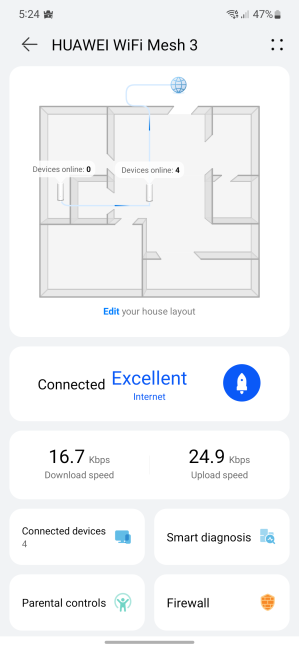
The HUAWEI Ai Life app is easy to use
HUAWEI Ai Life is friendly and easy to use. It offers a limited number of features and tools that mostly cover people's basic needs. The More features section gives access to some advanced stuff, like configuring your Guest Wi-Fi or IPv6 connectivity, but knowledgeable users will probably be disappointed and want more.
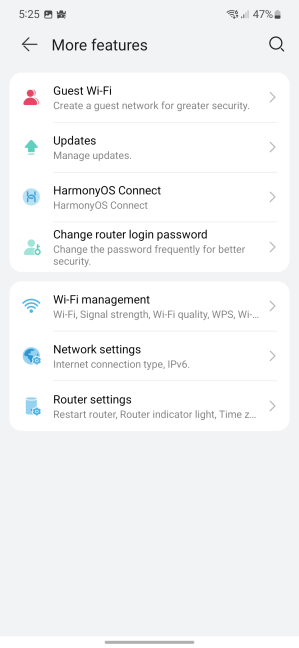
The more advanced features found in the HUAWEI Ai Life app
The most useful tool inside the HUAWEI Ai Life app is the Smart Diagnosis, which thoroughly evaluates your mesh Wi-Fi and highlights any problems and things that need fixing.
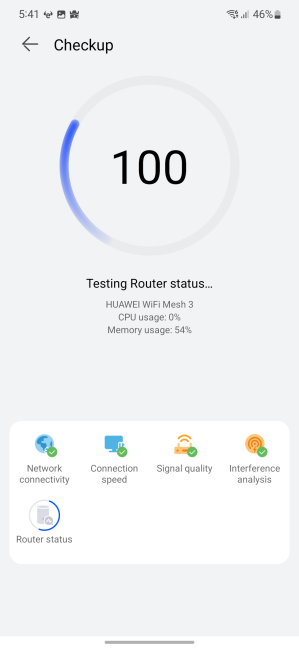
The Smart Diagnosis is useful
During my days of testing HUAWEI WiFi Mesh 3, I noticed the following:
- Wi-Fi coverage is a strength of this system. You can service a large living space with the HUAWEI WiFi Mesh 3. For example, a 3-pack kit like the one I received is overkill for my apartment. I could get complete Wi-Fi coverage in every nook and cranny with only two stations.
- The speed you get is good overall, but HUAWEI WiFi Mesh 3 doesn’t break any records, as its hardware is not powerful enough to do that. It’s a good match for people with up to 750 Mbps internet connections. If you have 1 Gbps or faster internet connections, you are better served by more expensive mesh Wi-Fi systems.
- I stumbled upon stability issues when setting the HUAWEI WiFi Mesh 3 to broadcast using the older 802.11n (Wi-Fi 4) and 802.11ac (Wi-Fi 5) standards instead of Wi-Fi 6. The system couldn’t keep the internet connection on for more than a few minutes. However, the internet got back up by itself after about 30 seconds of downtime. I downloaded a debug report from HUAWEI WiFi Mesh 3 and sent it to HUAWEI for troubleshooting to fix this problem in future firmware updates. Luckily, these stability issues did not manifest when using Wi-Fi 6 on both bands.
If you want to know more about the real-world performance offered by the HUAWEI WiFi Mesh 3, go to the next page of this review, where I present detailed measurements and comparisons.




